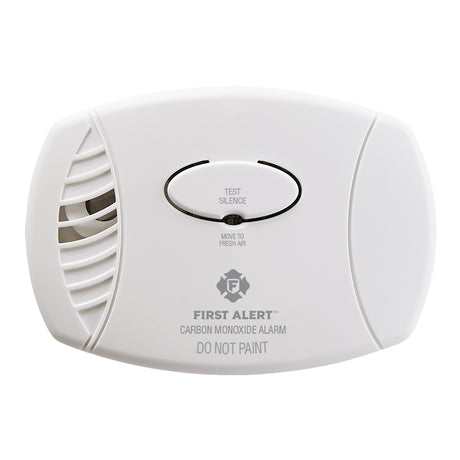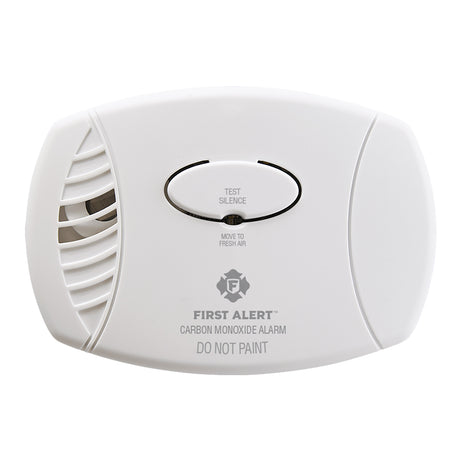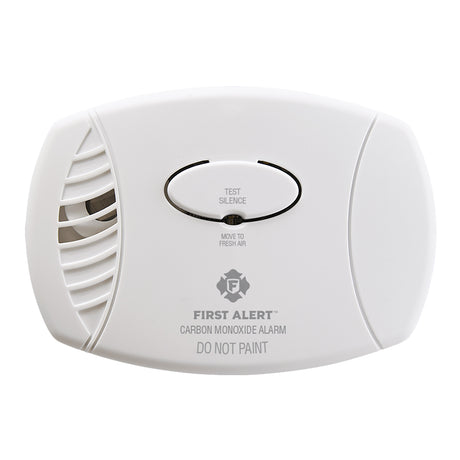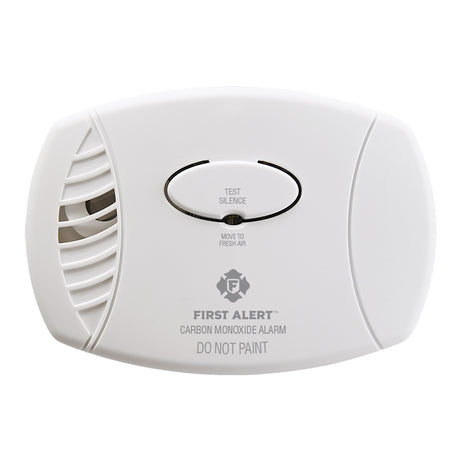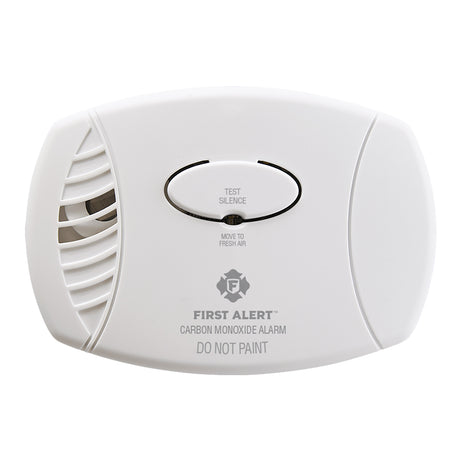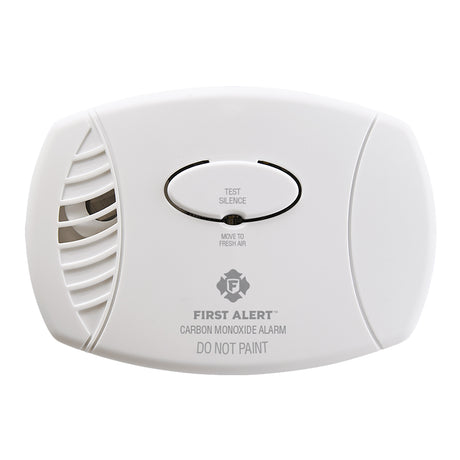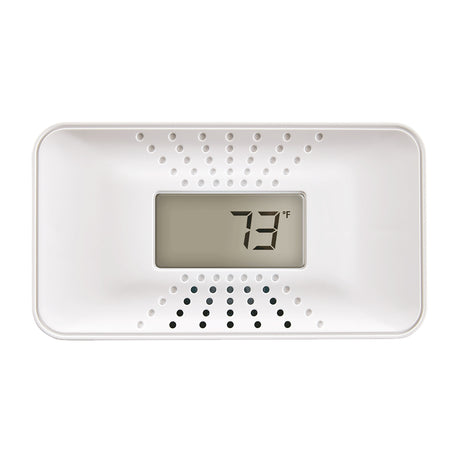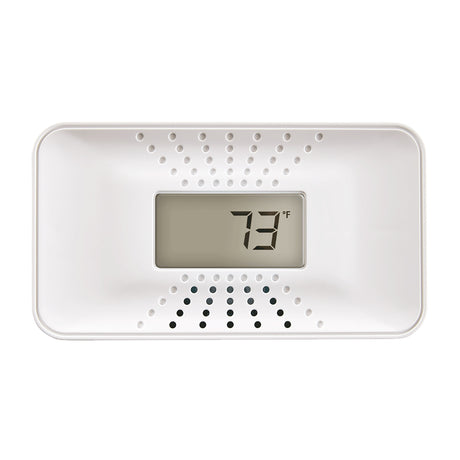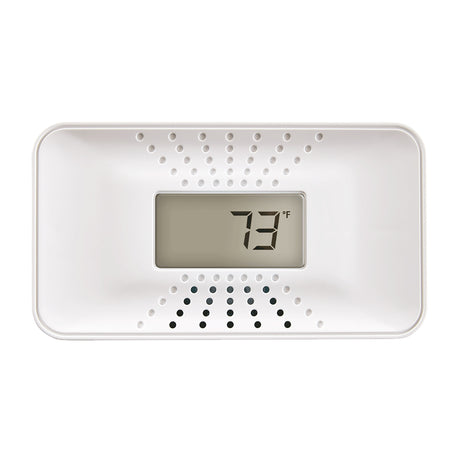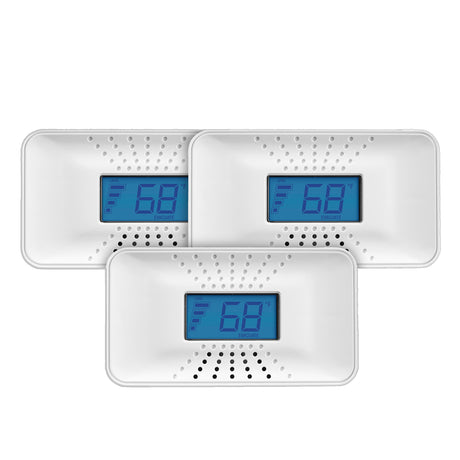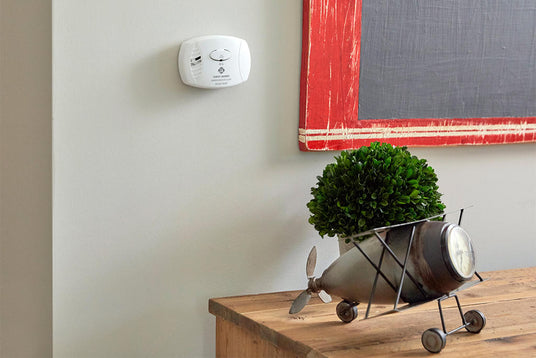
-
Battery Powered Carbon Monoxide Alarm
Model: CO400
$21.99Unit price /Unavailable -
$39.99Unit price /Unavailable
-
$54.99Unit price /Unavailable
-
$49.99Unit price /Unavailable
-
Plug-In Carbon Monoxide Alarm with Battery Backup
Model: CO606
$29.99Unit price /Unavailable -
Model: CO600
Unit price /Unavailable -
Unit price /Unavailable
-
Unit price /Unavailable
-
Basic Battery Powered Carbon Monoxide Alarm
Model: CO250
Unit price /Unavailable
Carbon Monoxide Detectors
First Alert carbon monoxide alarms include battery, plug-in and tabletop options.
What is Carbon Monoxide?
Carbon monoxide (CO) is an invisible, odorless and tasteless poisonous gas. Sources of carbon monoxide are any fuel burning devices, such as your stove, furnace or water heater. Carbon monoxide (CO) detectors are the only way to detect this poisonous gas to help provide an early warning.
Carbon Monoxide Safety
Carbon monoxide gas can only be detected by a CO alarm. The National Fire Protection Association recommends installing a carbon monoxide detector on every level of your home and inside each bedroom. Detectors should be tested monthly, and batteries replaced at least every six months to ensure the detector is functioning properly. First Alert offers a variety of CO detectors to meet your family’s needs:
- Battery Operated
- Plug-In Operated
- 10-Year Sealed Battery
- Tabletop Alarm with Digital Display
Help protect your family from the poisonous gas with CO and smoke detectors from First Alert, the most trusted brand in fire safety.
FAQs
Where should a carbon monoxide alarm be placed?
Where should a carbon monoxide alarm be placed?
Install carbon monoxide alarms on every level of your home, inside each bedroom, outside sleeping areas, and near attached garages for whole home detection. Avoid placing them within 10 feet of fuel-burning appliances, in bathrooms, or near vents and fans.
What triggers a carbon monoxide alarm?
What triggers a carbon monoxide alarm?
A carbon monoxide alarm sounds when it detects dangerous levels of carbon monoxide gas in the home, often caused by malfunctioning fuel-burning appliances like furnaces, water heaters, or stoves.
How many carbon monoxide alarms do I need for my home?
How many carbon monoxide alarms do I need for my home?
How often should I test or replace my carbon monoxide alarm?
How often should I test or replace my carbon monoxide alarm?
Test your carbon monoxide alarms monthly and replace any batteries every 6 months unless it’s a sealed 10-year battery model. If your alarm does not test properly or it is 7 years or older, replace the entire unit. See the product manual for specific information on how and when to test your alarms.
Which type of carbon monoxide alarm is right for my home?
Which type of carbon monoxide alarm is right for my home?
Each type serves different needs. Battery-operated alarms offer flexible placement, plug-in alarms are easy to install, 10-year sealed battery alarms require no battery changes, and tabletop models with digital displays provide portable detection with real-time readings.
